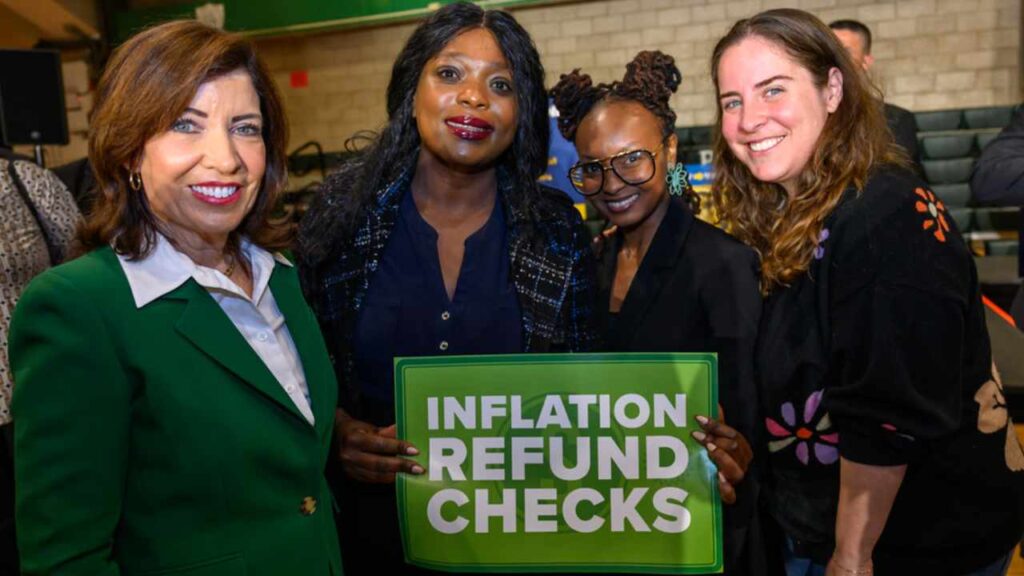New York State Governor Kathy Hochul will implement a financial compensation package within the fiscal 2026 budget. These actions respond to the rising cost of living in the state through mechanisms that include direct refunds and targeted tax adjustments.
The so-called “inflation refund checks” are one-time payments intended to offset excess tax revenues. These surpluses result from increased sales tax collections, attributable to high inflation. Distribution will take place automatically by postal mail between October and November 2025, while beneficiaries must submit a formal application or submit a request.
Who is eligible for the $400 inflation refund in NY?
Some 8.2 million households will receive approximately $2 billion in stimulus checks. Individual amounts vary depending on the taxpayer’s marital status and income during 2023.
The calculation is based on New York’s AGI (Adjusted Gross Income). Singles with incomes less than or equal to $75,000 will receive $200. Those with incomes between $75,001 and $150,000 will receive $150.
For married couples filing jointly, the lower limit is set at $400 with AGI ≤ $150,000. Those with incomes between $150,001 and $300,000 will receive $300. Categories such as “head of household” and “surviving spouse” receive similar amounts.
Other stimulus measures approved in New York
Along with these checks, a 0.1% income tax cut will apply specifically to single taxpayers and middle-class families. This reduction will be effective for fiscal years 2026 and 2027. At the same time, the Child Tax Credit is being temporarily expanded: $1,000 per child under 4 years old and $500 for children between 4 and 16 years old. This benefit will remain in effect for only two years, or at least that’s what was announced (although it could change).
The other policy approved by the Hochul administration is the free school meals program. It will cover breakfast and lunch for more than 2.7 million students. Official estimates project family savings of up to $1,600 per child annually. Universal service eliminates prerequisite eligibility requirements in participating districts.
The combination of these policies could generate aggregate savings of nearly $5,000 annually for typical families. This projection considers the combined effects of rebates, tax breaks, and food subsidies. Implementation depends on coordinated administrative schedules among state agencies.
To access any of these benefits, you must also meet the essential and non-negotiable requirement of permanent residency in the State of New York, since the idea is for the money to be invested, primarily, in local economies in the various cities and counties.
